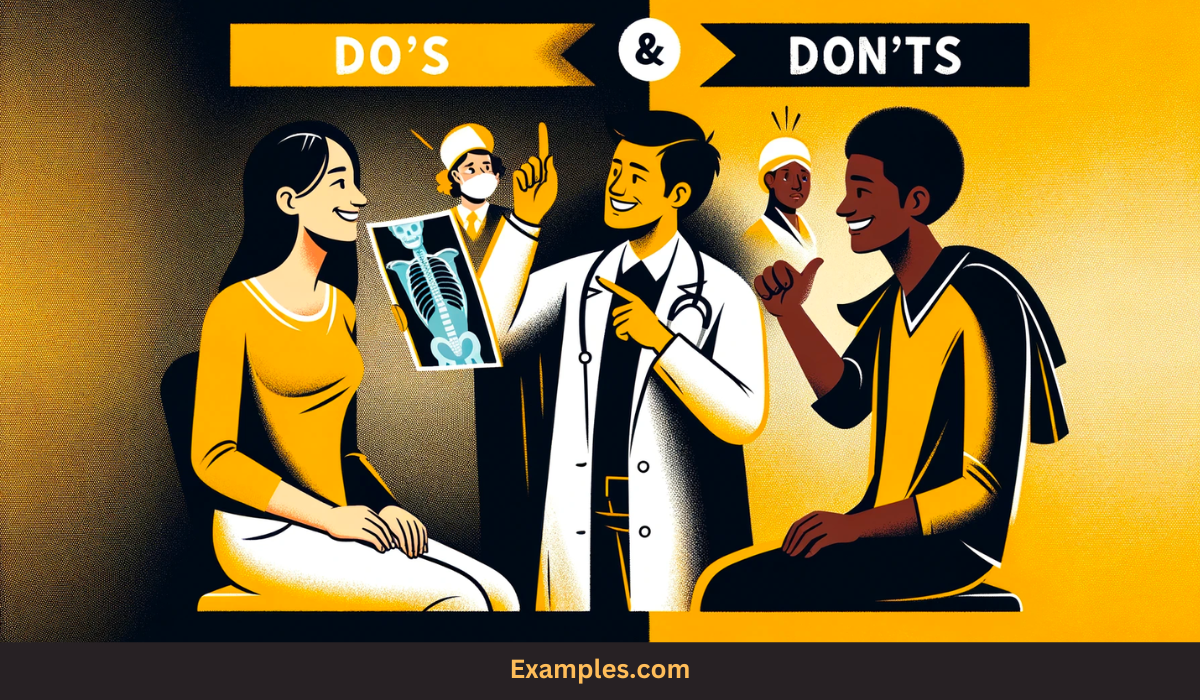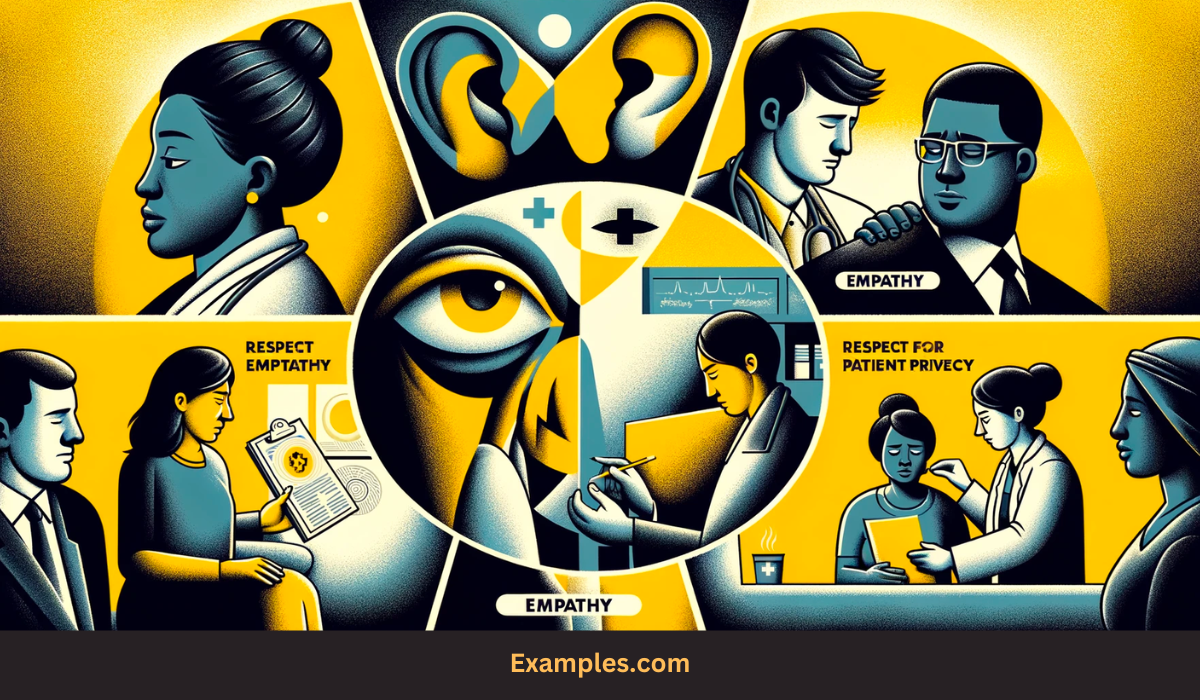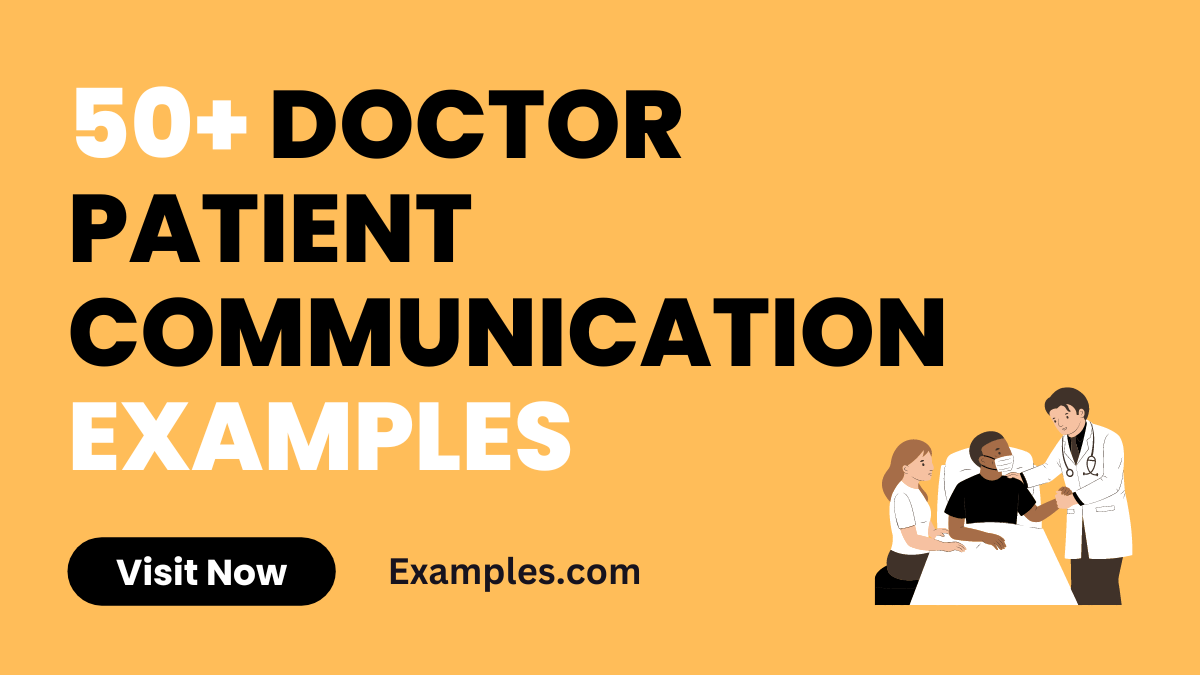Doctor Patient Communication
What is Doctor Patient Communication? – Definition
Doctor-Patient Communication is the exchange of information between healthcare providers and their patients. It’s a fundamental aspect of healthcare, encompassing everything from discussing symptoms and diagnoses to explaining treatment options and answering patient questions. This communication should be clear, empathetic, and effective, ensuring that patients fully understand their health status and treatment plans. Good communication is key to building trust, ensuring patient compliance, and delivering high-quality care. It plays a vital role in health communication, greatly impacting patient satisfaction and outcomes.
What is the Best Example of Doctor Patient Communication?
A prime example of Doctor-Patient Communication is the initial consultation. During this meeting, a doctor listens attentively to the patient’s symptoms, asks relevant questions for clarity, and explains possible diagnoses and treatments in understandable terms. For instance, a patient comes in with a persistent cough. The doctor would inquire about the duration, severity, and associated symptoms, explain the potential causes like a viral infection or allergies, and discuss treatment options. This interaction epitomizes effective communication, as it involves active listening, clear and empathetic communication, and mutual understanding, crucial for successful medical care.
50 Doctor Patient Communication Examples

In this detailed section, we present 50 distinct examples of Doctor-Patient Communication, illustrating the diverse ways in which healthcare professionals interact with their patients. These examples cover various scenarios, from routine check-ups to addressing complex health concerns, demonstrating the importance of clear, compassionate, and effective communication in healthcare. Each example is accompanied by an explanation and sample sentences, providing a practical understanding of how doctors can communicate effectively with patients, highlighting the significance of empathetic communication, health communication, and patient education.
- “Can you describe your symptoms in more detail?” A doctor inquires for more information, encouraging the patient to share specifics about their condition.
- “This medication may cause some common side effects like nausea or dizziness.” Informing the patient about potential medication side effects for better awareness and preparation.
- “Let’s schedule a follow-up appointment in two weeks to monitor your progress.” Planning continued care to ensure effective treatment and patient reassurance.
- “Can you tell me about your diet and exercise habits?” Gathering information about lifestyle factors that might impact the patient’s health.
- “I’m going to explain the results of your tests now.” Preparing the patient to understand and discuss their test results.
- “It’s important to take this medicine with food to avoid stomach upset.” Offering practical advice on how to take medication.
- “How have you been feeling since our last appointment?” Checking in on the patient’s progress and any changes in their condition.
- “Do you have any allergies to medications that we should know about?” Gathering essential information to avoid allergic reactions.
- “I recommend moderate exercise, like walking, to help with your recovery.” Suggesting lifestyle modifications to aid treatment.
- “Are you currently experiencing any pain?” Assessing the patient’s immediate discomfort or pain levels.
- “It’s important to manage stress as it can impact your condition.” Discussing the role of stress management in health.
- “Please ensure you complete the full course of antibiotics.” Emphasizing the importance of medication adherence for effective treatment.
- “I’d like to refer you to a specialist for further evaluation.” Arranging specialized care for comprehensive diagnosis and treatment.
- “Let’s discuss your treatment options in detail.” Exploring various treatment pathways with the patient.
- “It’s okay to ask questions if anything is unclear.” Encouraging open communication and patient involvement in their care.
- “We need to monitor your blood pressure regularly.” Discussing the importance of ongoing health monitoring.
- “Are you experiencing any side effects from the medication?” Inquiring about the patient’s response to prescribed treatment.
- “I’m here to support you through your treatment journey.” Offering reassurance and support to the patient.
- “Please let me know if you have any concerns about your health.” Inviting the patient to share their worries or questions.
- “It’s important to eat a balanced diet for your condition.” Providing dietary advice tailored to the patient’s health needs.
- “Keep a diary of your symptoms to help us track your condition.” Suggesting a practical way for patients to monitor their health.
- “Remember to schedule your annual health check-up.” Reminding patients about the importance of regular health screenings.
- “Avoid smoking and excessive alcohol as it can worsen your condition.” Advising on lifestyle changes for better health outcomes.
- “We will review your current medications to ensure they are still effective.” Discussing the need for ongoing medication assessment.
- “I’ll explain the procedure and what you can expect during recovery.” Preparing the patient for a medical procedure and recovery process.
- “Let’s talk about ways to manage your chronic pain.” Discussing pain management strategies for chronic conditions.
- “It’s crucial to get enough sleep for your overall health.” Emphasizing the importance of sleep in health and recovery.
- “We will take a step-by-step approach to your treatment.” Outlining a gradual treatment plan for the patient’s understanding.
- “I’ll show you how to use this inhaler correctly.” Demonstrating the proper use of medical devices for effective treatment.
- “We should consider both medication and therapy for your treatment.” Proposing a holistic approach to treatment, combining different methods.
- “Avoid strenuous activities for a few weeks after the surgery.” Providing post-surgery care instructions for safe recovery.
- “It’s normal to feel anxious about your diagnosis, but we’re here to help.” Addressing the patient’s emotional response to a diagnosis with support.
- “Please update me on any changes in your symptoms.” Requesting ongoing communication for effective treatment monitoring.
- “We’ll need to conduct some tests to understand your condition better.” Explaining the need for diagnostic tests to the patient.
- “It’s essential to manage your blood sugar levels regularly.” Discussing the importance of regular monitoring for diabetic patients.
- “Let’s create a personalized plan to manage your weight.” Developing a tailored approach to weight management with the patient.
- “I want to ensure you understand your treatment, so please ask any questions.” Prioritizing patient understanding and involvement in their treatment plan.
- “How are you coping with your current treatment regimen?” Assessing the patient’s experience with and response to treatment.
- “Remember, taking your medication at the same time each day is important.” Offering practical tips for consistent medication adherence.
- “We’ll adjust your treatment based on how you respond.” Discussing the adaptability of treatment plans based on patient response.
- “It’s important to stay hydrated, especially during hot weather.” Providing health advice relevant to environmental conditions.
- “Let’s review your family medical history for a better understanding of your risk factors.” Discussing the impact of genetics and family history on health.
- “Consider joining a support group to connect with others who have similar experiences.” Suggesting community resources for additional support.
- “We will work together to find the best treatment for you.” Emphasizing a collaborative approach to patient care.
- “I’ll need to know about all the medications and supplements you’re currently taking.” Gathering comprehensive information for safe and effective treatment planning.
- “Let’s schedule regular check-ins to monitor your mental health.” Prioritizing mental health as part of overall patient care.
- “We can explore alternative therapies that might benefit your condition.” Discussing a range of treatment options, including alternative methods.
- “It’s important to stay active to improve your heart health.” Advising on physical activity for cardiovascular wellbeing.
- “We’ll work on a plan to gradually reduce your medication.” Discussing a strategy for safely adjusting medication dosage.
- “You have a strong support team here to help you through your treatment.” Reassuring the patient of the support available throughout their healthcare journey.
Doctor Patient Communication Examples in Health

In the realm of healthcare, effective Doctor-Patient Communication is crucial for successful outcomes. This section provides 10 unique examples that highlight the importance of clear, empathetic, and respectful dialogue in various health contexts. These examples demonstrate how doctors can effectively communicate with patients, addressing their concerns, providing education, and ensuring a mutual understanding of health conditions and treatments. These scenarios are enriched with practical communication tips, embodying key aspects of health communication, patient education, and empathetic communication.
- “Can you describe how your pain feels and when it occurs?” Encouraging detailed description of pain helps doctors diagnose accurately. It shows attentiveness to patient experience.
- “We’ll need to regularly monitor your cholesterol levels.” Explaining the importance of regular health checks for managing specific conditions, emphasizing preventative care.
- “It’s important to avoid certain foods to manage your condition effectively.” Offering dietary advice specific to the patient’s health condition, ensuring they understand the reasons.
- “Would you like me to explain more about how this medication works?” Offering additional information about treatments, ensuring patient understanding and comfort with their care plan.
- “Tell me about any stressors in your life that might be affecting your health.” Acknowledging the impact of lifestyle factors on health, promoting a holistic approach to care.
- “Are you familiar with how to use a glucometer to check your blood sugar?” Ensuring patients know how to use medical devices, offering demonstrations or resources if needed.
- “Let’s talk about your sleep patterns and how they’re affecting your health.” Addressing sleep issues as a key component of overall health, showing concern for patient well-being.
- “I’m here to answer any questions you have about your upcoming surgery.” Providing reassurance and information about procedures, reducing patient anxiety and increasing trust.
- “It’s important to stay active, but let’s discuss what activities are safe for you.” Tailoring exercise recommendations to the patient’s condition, ensuring safety and effectiveness.
- “Please inform me immediately if you experience any adverse reactions to your new medication.” Stressing the importance of communication about medication side effects, prioritizing patient safety and care.
Do’s and Don’ts for Doctor-Patient Communication

Navigating the nuances of Doctor-Patient Communication is vital in healthcare. This guide focuses on the critical do’s and don’ts, essential for fostering effective communication and patient trust. Good communication is more than a skill; it’s an art that combines empathetic communication, active listening, and clear expression. By understanding and implementing these practices, healthcare professionals can enhance patient satisfaction, ensure effective treatment plans, and overcome communication barriers, leading to improved health outcomes and a stronger doctor-patient relationship.
Do’s:
- Do Listen Actively: Ensure you’re fully present and attentive, showing patients they are heard and valued.
- Do Maintain Eye Contact: This simple act builds trust and conveys empathy.
- Do Use Simple Language: Avoid medical jargon to ensure the patient understands their condition and treatment.
- Do Encourage Questions: Invite patients to ask questions, showing that their concerns are important.
- Do Show Empathy: Understanding and acknowledging a patient’s feelings is key to building a strong therapeutic relationship.
Don’ts:
- Don’t Rush the Patient: Allow patients enough time to express their concerns without feeling hurried.
- Don’t Interrupt: Frequent interruptions can make patients feel unvalued and hinder effective communication.
- Don’t Use Patronizing Language: Treat patients with respect; avoid talking down to them.
- Don’t Ignore Non-Verbal Cues: Body language can often convey as much as words.
- Don’t Overwhelm with Information: Providing too much information at once can be overwhelming; keep explanations clear and concise.
Importance of Doctor-Patient Communication

The importance of Doctor-Patient Communication lies at the heart of healthcare. Effective communication is a cornerstone in building a therapeutic relationship, crucial for accurate diagnosis, treatment adherence, and patient well-being. It’s about more than conveying information; it’s about creating a connection that respects the patient’s needs and perspectives. This connection significantly impacts patient compliance, health literacy, and health outcomes. Understanding this importance empowers healthcare providers to practice patient-centered care, enhancing overall healthcare quality and patient experience.
- Enhances Patient Understanding and Compliance: Clear communication helps patients understand their health conditions and the prescribed treatments, leading to better compliance and health outcomes.
- Builds Trust: Effective communication fosters a sense of trust between the doctor and patient, which is crucial for a successful therapeutic relationship.
- Aids in Accurate Diagnosis: Open and honest communication ensures that doctors receive all necessary information to make accurate diagnoses.
- Improves Patient Satisfaction and Experience: Patients who feel listened to and understood are more likely to be satisfied with their care, improving overall healthcare experiences.
- Facilitates Shared Decision Making: Good communication allows for shared decision-making, where patients are actively involved in their healthcare choices.
By prioritizing effective Doctor-Patient Communication, healthcare providers can ensure better patient care, satisfaction, and outcomes.
Types of Doctor Patient Communication
Understanding the types of Doctor-Patient Communication is crucial in healthcare to ensure effective and empathetic care delivery. These types vary, each serving a specific purpose in the patient’s health journey:
- Informational Communication: Essential for conveying medical information, diagnosis, and treatment plans. It’s factual, focusing on the patient’s health literacy.
- Interpersonal Communication: Builds a therapeutic relationship through empathy, active listening, and addressing the patient’s emotional and psychological needs.
- Instructive Communication: Involves giving clear instructions on medication, lifestyle changes, or procedures, crucial for patient compliance and successful treatment outcomes.
- Counseling Communication: Offers advice and guidance, particularly important in managing chronic illnesses, mental health, or significant health decisions, enhancing patient support and self-management.
- Collaborative Communication: Encourages patient involvement in decision-making, recognizing their preferences in their healthcare journey.
These types enhance patient engagement, doctor-patient trust, and ensure effective health communication.
Principles of Doctor-Patient Communication

Effective Doctor-Patient Communication is grounded in principles that foster understanding, trust, and patient well-being:
- Clarity and Simplicity: Communicate in a clear, jargon-free language to enhance patient understanding and health literacy.
- Empathy and Respect: Demonstrating empathy and respect addresses patient concerns and emotions, vital for a strong therapeutic alliance.
- Active Listening: Attentive listening to symptoms and concerns aids in accurate diagnosis and patient satisfaction.
- Honesty and Transparency: Honest communication about health conditions and treatment fosters trust and supports informed decision-making.
- Patient-Centeredness: A holistic focus on the patient, considering all aspects of their wellbeing, is key to effective patient-centered care.
- Confidentiality: Upholding confidentiality is essential for maintaining patient trust and privacy.
- Cultural Sensitivity: Acknowledging and respecting cultural differences ensures inclusive and respectful communication.
- Feedback and Adaptability: Encouraging patient feedback and adapting communication methods as needed supports patient empowerment and better health outcomes.
Adhering to these principles ensures comprehensive and compassionate care, crucial for successful healthcare delivery.
In conclusion, effective doctor-patient communication is vital for quality healthcare. By employing clear, empathetic, and respectful dialogue, doctors can significantly enhance patient understanding and trust. This guide has provided practical examples and tips to foster better interactions, ultimately leading to improved health outcomes. Remember, effective communication is a cornerstone of successful medical practice and patient satisfaction.



